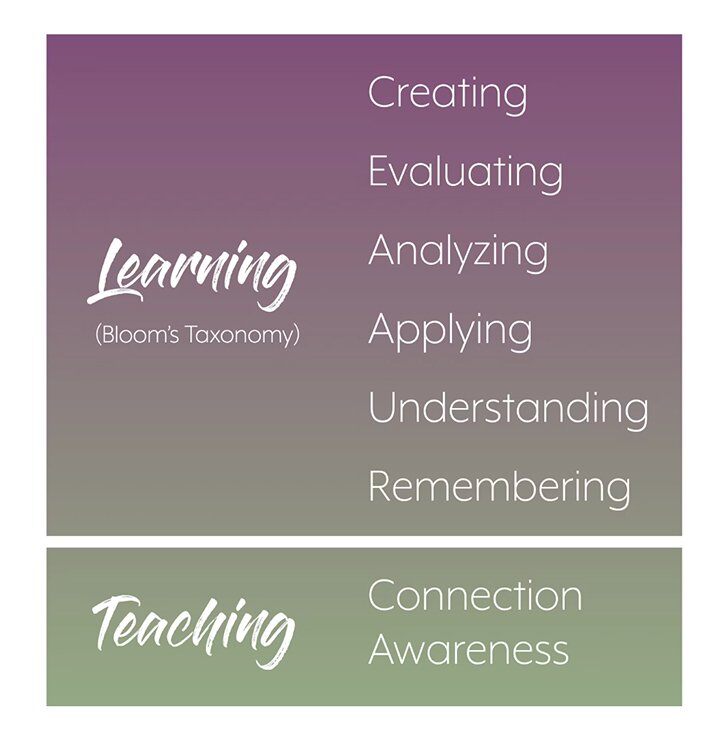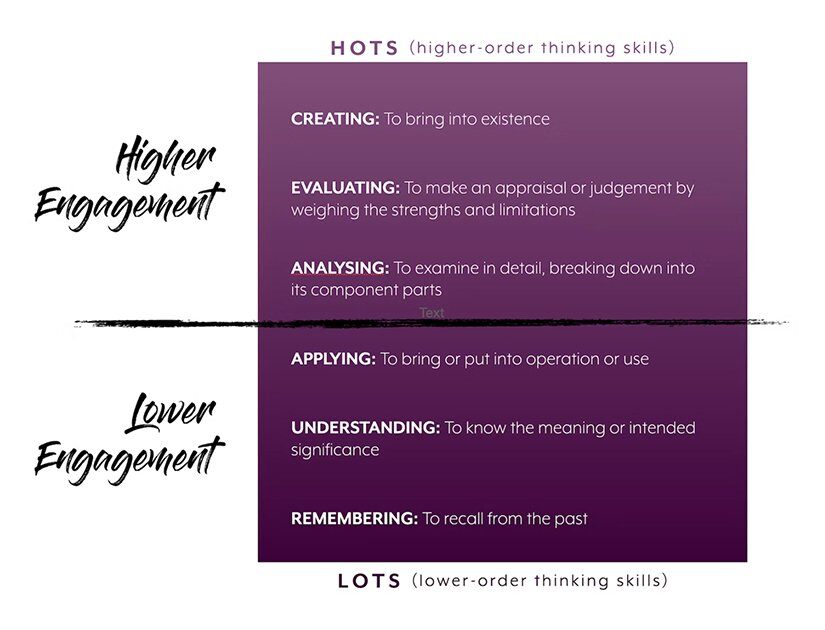Why Developing Strong Learning Connections Matters to Meaningful Learning
Ensuring our kids are making strong learning connections matters in all our teaching. It is among our highest priorities as educators. Why is this? Because without connection and relevance to the learner, there is no learning.
The above might seem like a decisive statement. However, keep in mind that a steadily growing body of research indicates effective learning depends on fostering learning connections. But when we talk about these connections, what exactly do we mean?
For our purposes, we can take a few different perspectives when talking about making learning connections. We can say that they can involve things like:
-
Linking existing knowledge to prior knowledge
-
Making our content relevant to our learners' lives
-
Engineering solutions to complex problems
-
Effectively correlating research with the lessons taught
-
Perceiving how things are related to one another
It makes no difference whether such connections are established by such things as firing synapses in the brain, by experiencing the "ah ha" moment when the correlation between two previously isolated concepts becomes apparent, or by knowing the satisfaction of connecting an abstract concept with a practical "hands-on" application (Cross, 1999).
Think about what happens when you learn something successfully; you make a valuable association or connection to fill a need or achieve a goal. You instantly realise the knowledge you've acquired will benefit you in some way; in other words, it has relevance and is something you can use. This makes sense since some main reasons we learn include personal development, problem-solving, and a general interest in knowledge (McFarlane, Wojciechowska, Dudzik, & Lakomska, 2019).
What's Going On In There?
What happens biologically in the brain when we learn? One paper from Université du Québec explains, "When you are learning, important changes occur in your brain, including creating new connections between your neurons. The more you practice, the stronger these connections become. As your connections strengthen, the nerve impulses are transmitted increasingly faster, making them more efficient."(Sarrasin, Foisy, Allaire-Duquette, & Masson, 2020)
The same paper illustrates building learning pathways with a practical example:
"We can compare ... your neurons to trails in a forest. Walking through a forest without a trail is difficult ... you have to compact and push the vegetation and branches out of the way ... but the more you use the same trail, the easier and more practicable it becomes. Conversely, when you stop using the trail, the vegetation grows back, and the trail slowly disappears." ( Sarrasin, Foisy, Allaire-Duquette, & Masson, 2020)
Another way to describe the effect learning has on the brain's neural mechanisms is this way:
-
New nerve cells may grow (and new neural networks are then formed) when we learn something new.
-
The strength of existing (synaptic) connections changes, thus functionally changing the connectivity (and the activity) within the existing neural networks in response to sensory stimuli.
-
New synapses are formed between neurons that were not connected before, thus effectively creating new networks of neurons that, when active, represent a new memory. (Segev, I., 2007)
As a teacher, an individual takes on the responsibility of helping others benefit from learning how to learn, namely those who will continue to develop our society. When we are long gone, the quality of learning connections we help learners establish will influence their decisions for years to come.
Our students can't learn without experiencing connections to the concepts we teach them (Immordino-Yang, M. H., 2015). We can achieve this by providing both context and relevance. Without connection, there is no interest, which always precedes meaningful and authentic learning (Crockett, L, 2019). So learners must make strong learning connections to help them develop the thinking habits they need to succeed.
“Think about what happens when you learn something successfully; you make a valuable association or connection to fill a need or achieve a goal.”
Awareness & Connection
The book Mindful Assessment (2017) presents an updated assessment framework in which awareness and connection appear at the bottom of Bloom's Taxonomy. The reasoning is to show how making strong learning connections is the start of any learning journey (Crockett. L, Churches, A. 2017). It happens with these two factors:
-
Awareness—This is essential to learning anything since we can't conceive or recall anything we aren't aware of. Though evident, we don't often consider how crucial this is. Conscious knowledge of something gives it meaning and substance.
-
Connection—Without connection, it's challenging to learn something that doesn't speak to our interests and needs. Connection paves the way for critical thinking and having a stake in learning that carries both context and relevance.

The line separating teaching from learning is between connection and remembering, and it's where learning begins. This is why taking advantage of making strong learning connections early on matters so much in our teaching. We use them to provide access to new knowledge and skills and can then leave the learning to the learners. One study stresses, "In helping students to activate the prior knowledge they bring to the learning environment, teachers build on students' strengths and experiences to create new learning" (Correia, M. & Bleicher, R, 2008).
How We Make Our Learners Bloom
After awareness, connection determines which of Bloom's taxonomic levels the learning can reach. For example, if learners have a low level of connection, they are practising passive compliance. It's like being engaged just enough to pass the course and nothing more, and this kind of learning presents little or no value to the learner.
A low-level connection generates learning at Bloom's Taxonomy's lower end. At best, students would be remembering, understanding, and maybe applying the knowledge. Beyond that, soon after the content is learned, it will likely be discarded and forgotten.

However, the outcome is different when we achieve a high level of connection through tasks that promote agency and ownership. For example, we develop higher-level thinking by making strong learning connections with activities that foster relevant skills with practical value, such as problem-solving and creativity. It's this relevance factor that leads to high degrees of learning ownership.
Establishing connections matters since learning is personal for everyone. In the book Future-Focused Learning, I describe personalised learning as having these characteristics:
-
It's tailored to a learner's interests and abilities with curricular connections
-
Relevant tasks are offered that shift responsibility for learning to the learner
-
It accommodates a learner's unique pace
-
Technology can be used to connect to learners' interests
-
It uses self- and peer-conducted formative assessments
-
Students have some control over what and how they learn
Everything about personalised learning fosters autonomy, agency, and responsibility in our students for their education. It's designed to help learners establish vital connections to past, present, and future information and to use these connections to address needs, solve problems, and build knowledge for life. This culminates in more independence, resiliency, and critical thinking capacity later on in life.
How to Get Connecting
Making strong learning connections can happen in so many different ways. Consider some of the suggestions below.
-
Saving the Day: Pick topics for learners to share in groups. Have them investigate the history of one global issue that we struggle with and pinpoint why it's a problem that remains unsolved. Next, have them generate one starting point for beginning transformational change.
-
Share Intentions: When learners understand learning intentions by unpacking them themselves, they are instantly connected to the learning. Share the learning intentions with your learners and ensure they know their success criteria and how they'll know they've achieved them.
-
Looking Locally: Find clear links between the lessons you design and things that are transpiring in your local community, and even get learners actively involved with community individuals.
-
Seek Their Help: Get your learners' input on your next lesson design or success criteria development. Work with them to agree on projects, assessment criteria, timelines, milestones, ongoing assessment activities, and more.
-
In the Field: There's nothing like a good field trip to ignite curiosity and connect learning to the world outside the classroom. Have students help organise your next field trip, and assign groups to perform separate learning quests or lesson-related scavenger hunts.
-
Make a Mess: Allow learners to build something physical, be they models, dioramas, or actual working machines that serve a unique purpose or solve a specific problem. Makerspaces are the ideal domains for fostering this brand of learning creativity and making solid connections to concepts through hands-on applications. Work with students and administrators to build and equip a makerspace in or outside the school.
When learners connect to their learning, they own it for life and they will use it again and again. It's also one of the best building blocks in the pursuit of learner agency. By focusing on making strong learning connections first, we're providing learning experiences of tremendous value to our learners.
References
Correia, M. G., & Bleicher, R. E. (2008). Making connections to teach reflection. Michigan Journal of Community Service Learning, 14(2), 41-49.
Crockett, L. W., & Churches, A. (2017). Mindful assessment: The 6 essential fluencies of innovative learning. Bloomington, IN: Solution Tree Press.
Crockett, L. (2019). Future-focused learning: 10 essential shifts of everyday practice. Bloomington, IN: Solution Tree Press.
Cross, K. P. (1999). Learning Is about Making Connections. The Cross Papers Number 3.
Future-Focused Learning. (n.d). Shift to personalised learning. Accessed at https://app.futurefocusedlearning.net/posts/shift-to-personalised-learning-introducing-personalised-learning on Oct 28, 2022.
Immordino-Yang, M. H. (2015). Emotions, learning, and the brain: Exploring the educational implications of affective neuroscience. New York: Norton.
McFarlane, O., Wojciechowska, M., Dudzik, K., & Łakomska, O. (2019). Adult education from a psychological perspective. Journal of Education, Health and Sport, 9(9), 386-392.
Sarrasin, J. Foisy, L.M. Allaire-Duquette, G. Masson, S. (2020). Understanding the Brain to Help you Learn Better. Frontieres for Young Minds, 8–54. Université du Québec, Montréal.
Segev, I. (2007). What changes in the brain when we learn?. On Memory: An Interdisciplinary Approach, 165-76.
